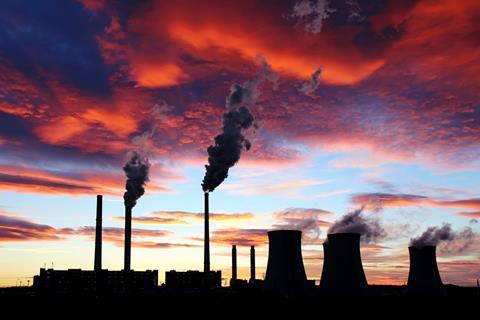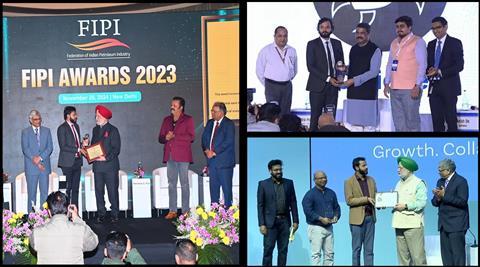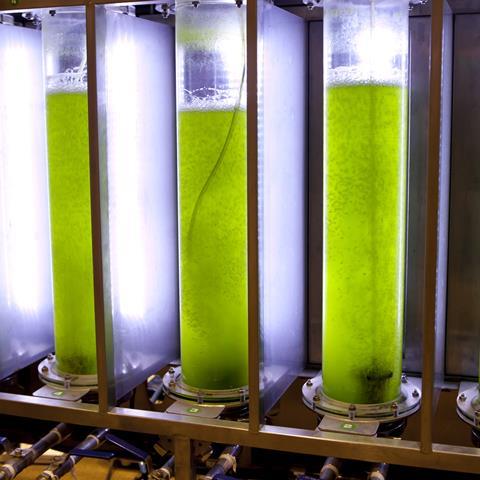When petroleum engineers Amit Priyadarshan and Anandh Mathew founded Caliche Private Limited in 2018, their initial vision was not limited to the oil and gas sector they knew so well. Instead, they were driven by a bigger challenge: climate change. The company’s name, Caliche, comes from the hardened, calcium-rich soil layers found in arid landscapes — a symbol of resilience and transformation. That same spirit would come to define their mission: to convert industrial carbon emissions into valuable resources using the power of microbes.
From energy roots to environmental vision
Both founders spent years understanding industrial processes, energy flows, and operational efficiencies. But as the environmental crisis deepened, they began asking different questions: could the same skills used to extract resources from the earth be applied to protect it? Their answer came in the form of microbiology — specifically, extremophilic microorganisms capable of capturing and converting CO₂ from industrial flue gases.
This pivot marked the beginning of CarbonOne, Caliche’s flagship microbial carbon capture technology. Unlike chemical methods that require significant energy inputs, CarbonOne relies on hardy microbial strains (internally named CPLPB1 and CPLPB2) to absorb CO₂ and transform it into commercially valuable compounds.
How CarbonOne works
In simple terms, CarbonOne is a bioengineered solution that feeds industrial emissions directly to specialized microbes in controlled bioreactors. These microbes, often tolerant of extreme temperatures and pH levels, use CO₂ as a carbon source to grow and produce compounds like bioplastics and specialty chemicals.
The process is modular, making it adaptable to a wide range of industries — from cement plants to steel mills, power stations to hydrogen production units. In its current pilot form, the system captures around 10 tons of CO₂ per day, proving both feasibility and scalability.
For microbiologists, the intrigue lies in how these organisms maintain metabolic efficiency under harsh industrial gas conditions, and how Caliche’s research optimizes factors like light, nutrient feed, and gas residence time to maximize capture rates.

Building the right team
Caliche’s journey has been defined by its multidisciplinary team — chemical engineers, microbiologists, data scientists, and process engineers working together. The company has cultivated strong academic partnerships with institutions such as IIT Guwahati, PDEU Gandhinagar, IIT-ISM Dhanbad, UPES Dehradun, and Madurai Kamaraj University. These collaborations fuel innovation while also training the next generation of scientists and engineers.
The founders place a premium on curiosity and grit over formal credentials alone. They actively recruit people willing to experiment, adapt, and work at the frontier of industrial microbiology. In a space where there is no blueprint, adaptability is the key hiring criterion.
Expanding impact beyond Earth
While their core work addresses terrestrial climate issues, Caliche is also exploring space applications. Through their BeyonEa Project, the team is working with India’s IN-SPACe to study how microbes can help form bio-cement for extraterrestrial construction. It’s a striking example of how carbon-fixing microbes could play a role not only in planetary sustainability but also in off-world living.
Recognition and milestones
Over the past few years, Caliche has gained national recognition. They won “Best Startup” at India Energy Week 2023, presented by the Ministry of Petroleum & Natural Gas, and earned accolades at KPMG’s ENRich Summit. The company has also built an intellectual property portfolio of over a dozen patents, underscoring its commitment to proprietary innovation.
Their business model blends CAPEX (installation of capture units at client sites) with OPEX (operation and maintenance services) and product sales (monetizing microbial biomass outputs). This structure aligns financial incentives with environmental benefits - a crucial factor for adoption in heavy industries.

A career in carbon capture microbiology
For microbiologists and biotechnologists, working at Caliche means applying your skills in real-world, high-impact environments. This is not academic bench science alone; it’s scaling microbial systems to process tons of emissions daily. It’s about navigating challenges like gas-to-liquid transfer efficiency, contamination control in open environments, and metabolic optimization for dual goals — carbon capture and product generation.
Caliche’s work demonstrates that careers in microbiology can extend far beyond healthcare or the food industry. Here, microbes are industrial workforce members, transforming the byproducts of heavy industry into raw materials for the green economy.
Looking ahead
The next phase for Caliche involves scaling CarbonOne to handle hundreds of tons of CO₂ per day and diversifying the product portfolio to include biopolymers, sustainable aviation fuel precursors, and specialty fermentation products. They are also exploring integration with renewable energy systems to create entirely carbon-negative production loops.
For the founders, the mission remains clear: to turn carbon from a liability into an asset. Microbes, they believe, are the most adaptable and efficient partners in that journey. By combining engineering precision with biological ingenuity, Caliche is proving that fighting climate change can go hand in hand with building a viable business.








No comments yet